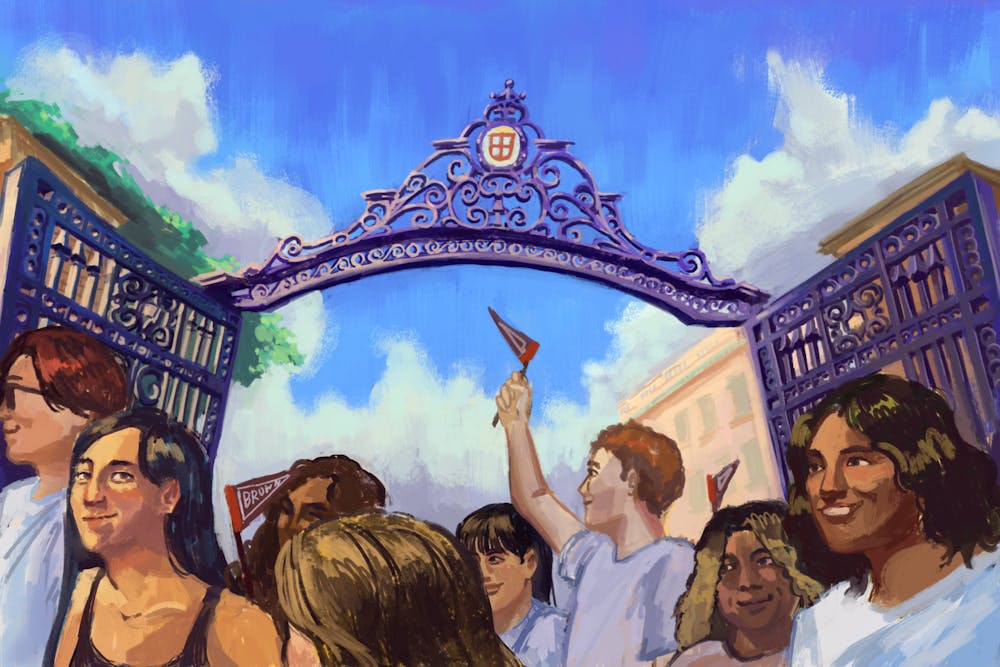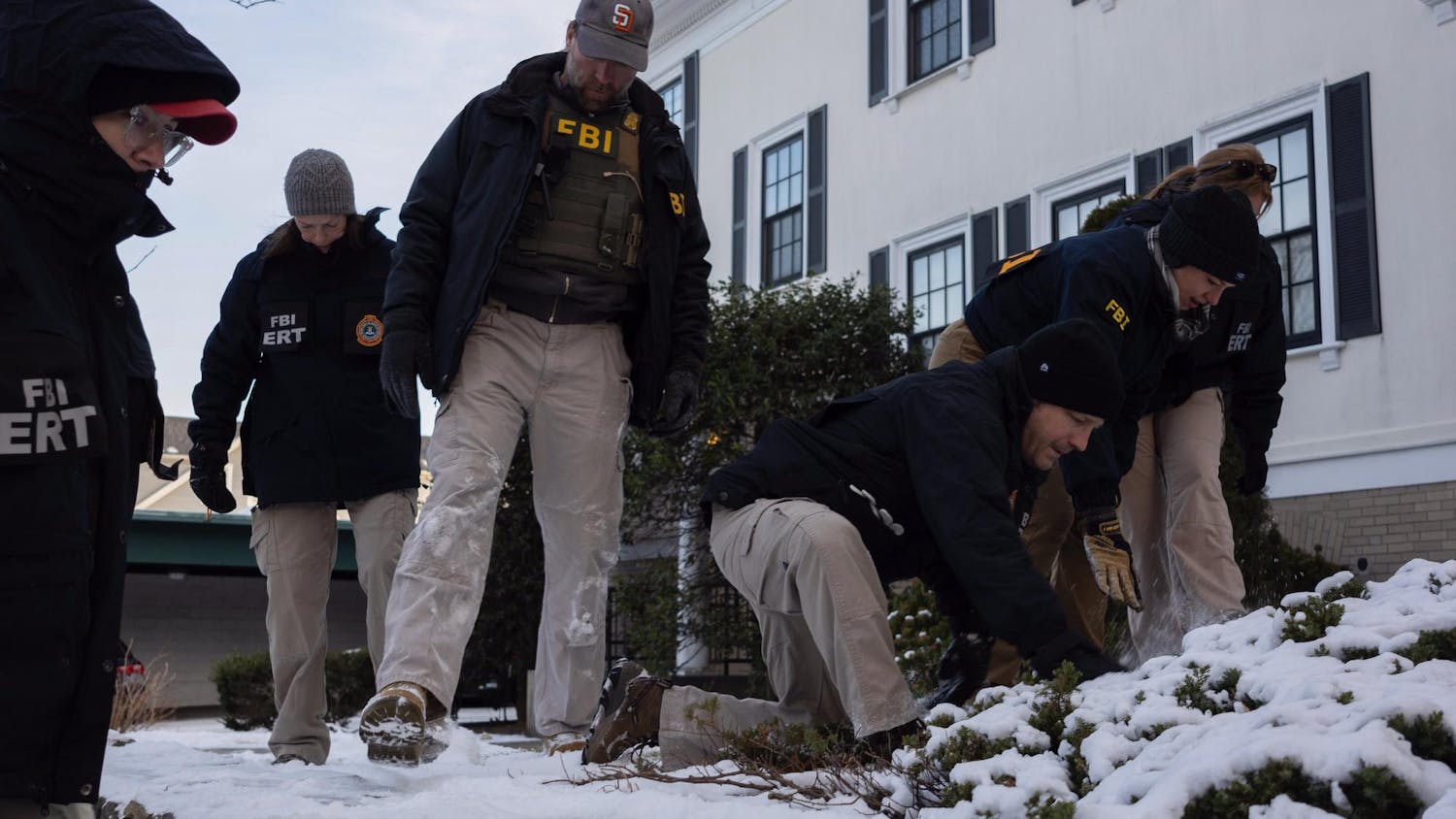The Herald conducted its first-ever poll of the incoming first-year class between July 26 and August 7. The poll’s questions spanned topics including intended concentrations, relationship status, substance use and political views.
The Herald distributed its survey via email and received 710 responses out of 1,699 incoming students, representing approximately 40% of the incoming first-year class. All questions, except for those asking about demographics, were optional, and all responses have been de-identified. Only accounts with Brown email domains were able to submit the form, but no email addresses were recorded.
With 53,730 data points analyzed, the poll represents the most comprehensive look at any first-year class the University has ever seen. While some of the most notable findings can be found below, our interactive site offers further data exploration.
Note: With smaller sample sizes, the likelihood of misrepresenting certain groups in a cross-tabulation increases. The Herald’s goal is to minimize the risk of representing any group inaccurately, so we omitted/combined certain populations from which we did not collect enough responses. The survey’s sample, while representative in many ways of the student body as a whole, was not random nor entirely representative.
Demographics
Hailing from 48 states and Washington, D.C., the class of 2027 travelled from far and wide as they make the move to the Ocean State. The most common states of residence among first-year students are New York, California, Massachusetts, New Jersey and Texas. Wyoming and Nevada are the only states not represented in the first-year class, Associate Provost for Enrollment Logan Powell wrote in an email to The Herald.
Seventeen percent of the incoming first-year class are international students, residing in 78 different countries, Powell wrote. The most common countries of origin as indicated by the University are China, Canada, the United Kingdom, South Korea and Hong Kong.
About 63% of incoming first-year students identify as straight — roughly the same percentage as the current student body, according to findings from The Herald’s spring 2023 poll. Thirty-seven percent do not identify as straight, compared to the 20.8% of similarly aged Americans.
The most common identity among those in the LGBTQ+ community is bisexual, at nearly 15% of total respondents, followed closely by unsure or questioning at 6%. Current Brunonians have identified as questioning at similar rates in recent years, according to an analysis of previous Herald polling data.
The gender gap between respondents is stark, with nearly 20% more women than men identifying as not straight. While just over 5% of male students identify as bisexual, more than 22% of female students do, representing almost a quarter of female first-year students. Male first-year students are twice as likely to identify as gay than bisexual.
Lifestyle
Roughly one-fifth of incoming first-year students are in a committed long-term relationship, with an additional 8% reporting they are in a casual relationship. An equal percentage of current Brown students reported being in a casual relationship in The Herald’s fall 2022 poll, though slightly more — 25% — were in a long-term relationship.
A larger share of single male respondents said that they are looking for something casual than the share of single female respondents who said the same, while more single female respondents reported not looking for anything.
A little over one-third of first-year respondents reported having had sex (the poll did not provide a definition), a share that remains consistent for both straight and non-straight students. But recruited athletes, who are underrepresented in the poll broadly, are much more likely to have had sex at 63% — nearly twice the share of non-recruited athletes who reported having had sex.
Two-thirds of first-years who responded to the poll reported trying alcohol, making it the most common substance that respondents had tried from listed options. Next was marijuana, tried by one-third of respondents, followed by nicotine at 20%.
The vast majority of first-year students reported that they do not have a fake ID, with roughly 14% of respondents saying that they possess one. The likelihood of having a fake ID rose with the frequency of alcohol use, with nearly 40% of those who consume alcohol at least once per week reporting having one.
About 60% of first-year students held a paying job in high school, with the largest shares holding a part-time job seasonally or throughout the year. Employment varied slightly when accounting for financial aid status. Almost 70% of first-year students receiving grants covering some costs reported holding a paying job, compared to 54% of those receiving no financial aid and 58% of those receiving grants covering all costs.
Political Views
An overwhelming share of first-year respondents reported holding liberal political views, with 30% and 42% describing their political ideology as very or somewhat liberal, respectively. Just under 17% identified as moderate, with just over 6% identifying as somewhat or very conservative. The first-year class self-identifies as significantly more liberal than the American public, as a 2021 Gallup survey found only 34% of Americans aged 18 to 29 identified as liberal. Still, members of Gen Z hold views that are more progressive than older generations, according to a Pew Research poll.
Female respondents were more likely to be liberal, with 79% identifying as very or somewhat liberal compared to 62% of men.
Political ideology also varied by legacy and self-reported socioeconomic status. First-year students whose parents attended Brown identified as liberal at much higher rates, with 93% holding very liberal or somewhat liberal political views.
Self-identified upper-class respondents were the least likely to report being very liberal and most likely to be somewhat or very conservative, while middle-class respondents tended to be the most moderate.
International students were less likely to identify as very liberal, being over three times more likely to be independent than domestic students.
When asked whether they believe socialism is a preferable economic system to capitalism, first-year students were largely split in their responses. The 38% of respondents who said they strongly or somewhat agree with the statement is less than the 44% of Americans aged 18 to 29 who reported having a very or somewhat positive impression of socialism in a 2022 Pew Research Center survey.
Support for socialism was higher among those receiving financial aid and was lower among those who are not receiving grants or loans.
Nearly two-thirds of respondents support the federal legalization of marijuana, with greater support among those who reported holding very or somewhat liberal views. Support for legalization was higher among respondents who had tried marijuana and increased as frequency of marijuana use increased.
Academics at Brown
Of the nearly 80 concentrations offered at Brown, Computer Science, Economics, International and Public Affairs, English, Biology, Political Science and Engineering were the most popular primary concentrations for first-year students — though a plurality reported being undecided. Just over half of respondents reported being somewhat or very sure of their intended concentrations.
Nearly 88% of respondents intend to pursue a diploma beyond a bachelor’s degree. A Master’s degree was the most popular post-graduate degree at slightly under 37%, followed by a PhD at slightly under 27% and an MD at slightly under 16%.
Admissions
Just under half of the 1,700 students in the incoming class were admitted via early decision and Questbridge, leaving the remainder of the spots to be filled by applicants from regular decision and the University’s Resumed Undergraduate Education program.
Nearly three-quarters of incoming students indicated that Brown was their top choice during the admissions process.
Among students who applied under regular decision, almost 40% reported that Brown was their top choice. Questbridge applicants, who rank colleges based on personal preferences and are subsequently matched with an institution, were evenly split on whether Brown was their top choice.
Among students who did and did not think of Brown as their top choice, other Ivy League colleges were among the top choice institutions for many, with Yale, Harvard and Stanford University leading the pack. Columbia and the Massachusetts Institute of Technology also rank highly among students shooting for these elite colleges. In the 607 responses received, only 67 unique alternative colleges were indicated as dream schools.
But after those applying regular decision received their decisions, back-up colleges differed dramatically, with most of the previous dream institutions falling much lower on the list.
Instead, UC Berkeley, UC Los Angeles and Northwestern University topped the list, with Cornell, Duke University and Georgetown University trailing closely behind. As students decided which of the 86 substitute colleges they would ultimately enroll in, these other highly-ranked colleges ultimately fell second to Brown.

Owen Dahlkamp is the managing editor of newsroom on The Herald's 135th Editorial Board, overseeing the paper's news operations. Hailing from San Diego, CA, he is concentrating in Political Science and Cognitive Neuroscience with an interest in data analytics. In his free time, you can find him making spreadsheets at Coffee Exchange.

Sam Levine is a University News editor from Brooklyn, New York covering on-campus activism. He is a senior concentrating in International and Public Affairs.





